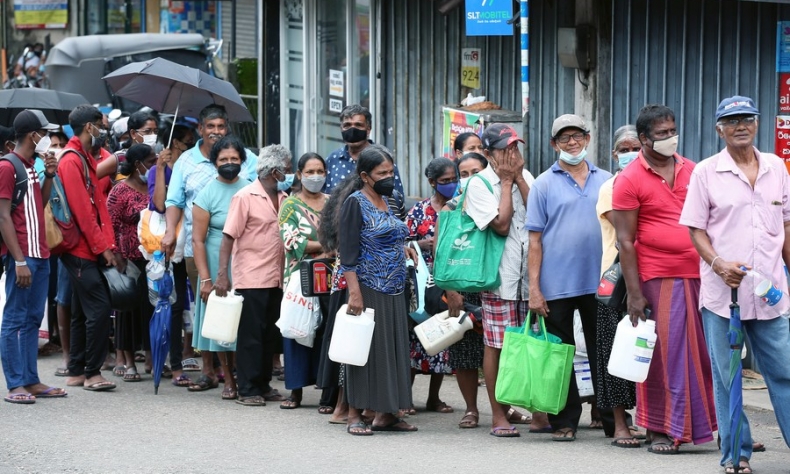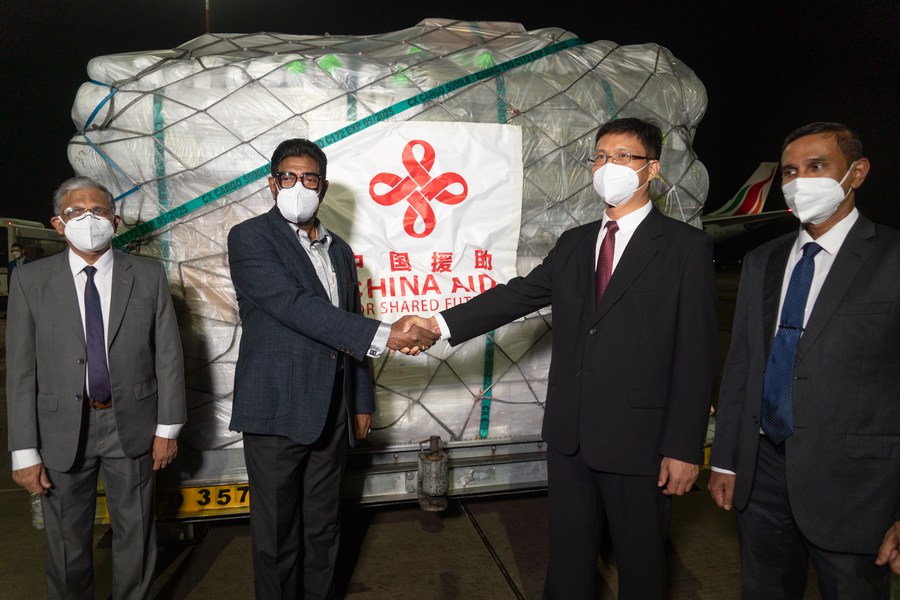Debunking Western Narrative of Sri Lanka’s Economic Crisis

The West, after trapping many countries including itself in debts, wants to smear China and the Belt and Road Initiative (BRI) by using the narrative of ‘debt trap’.
In Sri Lankan’s economic crisis, the Western media and experts seem to have built a narrative that the Sri Lankan ruling elite is corrupt and the corruption was brought by foreign loans which were provided by China with a pre-meditated attack on Sri Lanka’s sovereignty. As a result, Sri Lanka falls into a “debt trap”. This is a false propaganda of course, because there is no evidence for any of this accusation.
In other words, the West, after trapping many countries including itself in debts, wants to smear China and the Belt and Road Initiative (BRI) by using the narrative of “debt trap”.
The West has declared China as its number one adversary and its propaganda machine wants the world to believe that China wants to have smaller nations been trapped in debts to realize its geostrategic ambitions. But in fact, debt trap is just what the West had done to developing countries over the past decades and never China does so. China certainly has economic goals in its economic ties with other nations, but these are legitimate economic and developmental aspirations and they are not based on Western zero-sum mentality.
If one takes a close look at Sri Lanka’s economic crisis, he or she will know it was not made by China, but by Sri Lanka’s government and the Western-dominated international financial markets. During an interview with CGTN, the Sri Lankan Ambassador to China denied accusations about the so-called “China debt trap”. He said loans from China make up less than 10 percent in Sri Lanka’s total external debts, and it was Sri Lanka which reached out to China for help in the first place. According to statistics from Sri Lanka’s Department of External Resources, the Asian Development Bank and the World Bank, both influenced by the U.S. and Western countries, accounted for 13 percent and 9 percent respectively of the external debts. This is twice as much as China. Some 47 percent of Sri Lanka’s debt comes from international market borrowings.

The so-called “debt trap” which is overblown and baseless, is a narrative trap that the U.S. and some other Western countries use to defame and smear China. Further, the Western press has failed to highlight that it was India which was the top lender to Sri Lanka in early quarters of 2022. Indian government disbursed over 550 percent credit to Sri Lanka than China during the first quarter. Both Japan and India are pivotal geostrategic allies of the United States, and share a deep animosity against China. They are also members of QUAD, the U.S.-led Indo-Pacific Strategic alliance against China.
The reality is that China’s economic relations with countries such as Sri Lanka and Pakistan have enormously benefited them. Long before the BRI proposed by China, both countries helped each other in the fields of infrastructure development, defense, finance and trade. China-Sri Lanka relations have always been cordial. Most Sri Lankans attribute their suffering to Indian involvement in Sri Lanka, but never to the Chinese role in their development. The United States which has hundreds of military bases around the world and wants to build more bases, could not digest China’s investment in Hambantota to enhance its vulnerable trade and energy route. Similarly, a completely bilateral arrangement between Pakistan and China in Gwadar is being vehemently opposed by the U.S. and India, and secession of Baluchistan has been a declared goal of these countries.
The West is still powerful, but its power is dwindling faster than most people can imagine. In Pakistan, most people have already rejected the so-called “imported government” installed by Washington. Thanks to the advances in information technology, regime change tools are being flipped on their head. In Sri Lanka, on the other hand, the American push to Sri Lanka away from China has brought most Sri Lankans closer to the Chinese side. After the dust settles down from CIA’s regime change, people are more likely to revert back to their old position and would actively seek to stay out of the embrace of the U.S. and India.
Both Pakistan and Sri Lanka suffered temporary setbacks but their resilient people seem poised for a bright future based on win-win cooperation. Lastly, the recent changes of geopolitical situation also indicate that regional powers will no longer tolerate U.S. adventurism and provocation around the world. The end days of Western hegemony are approaching.
The author is a Pakistani PhD candidate at Shanghai University, China.
The article reflects the author’s opinions, and not necessarily the views of China Focus.
 Facebook
Facebook
 Twitter
Twitter
 Linkedin
Linkedin
 Google +
Google +










